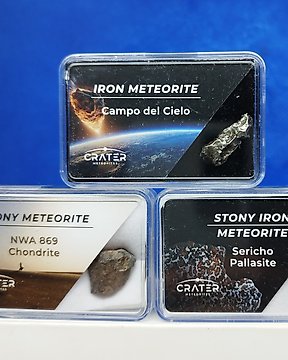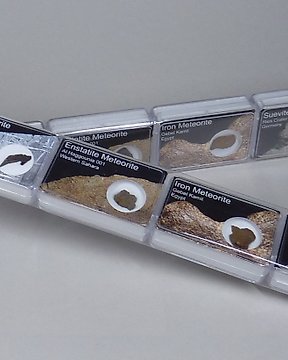muy contento con la compra y el envío, rápido y seguro, como merecen las 4 piezas históricas que adquirí, con toda su documentación, vendedor muy muy recomendable, un placer
查看翻译古埃及 石头 拟人勺。晚期,公元前 664 - 332 年。高 11.5 厘米。西班牙进口许可证。
编号 88783217





Spoon.
Ancient Egypt, Late Period, 664 - 323 BC.
Serpentine Stone.
Length 11.5 centimeters.
PROVENANCE: Private collection, Paris, France. Acquired in the 1980s.
CONDITION: Good condition.
Swimmer's spoons appear in the early 18th Dynasty, with the beginning of the New Empire; the earliest surviving example dates from the reign of Akhenaten, although the model probably dates even earlier. It remained in use for centuries, reaching into the early Christian period. There are also some surviving examples from the Sudan from the Napatean period (ca. 700-300 BC). It was a model that spread eastwards across the Mediterranean, as evidenced by a spoon of this type found in Cyprus, which is very close to Egyptian models. Generally polychrome, either by the application of paint or by the combination of materials, these pieces are made of wood, ivory, stone or even faience.
The girl who forms the handle, known generically as the swimmer, may have Egyptian or Nubian features, wears a wig and is always nude, although occasionally she is adorned with a necklace or a sash or belt. The pose is always identical, with her legs together and outstretched, her feet also outstretched and her arms facing forward, holding a bowl which may be rectangular, oval or cartridge-shaped, although on numerous occasions it will take the form of a water bird, often with the wings forming a lid. Other, rarer examples depict aquatic plants, fish or even an antelope (fig. 6). The spoons with simple bowls could be interpreted as depicting women carrying offerings. Among the second group, the most numerous are those in which the bowl takes the form of a duck or goose; in this case, the position of the arms suggests that the girl would not be swimming, but would be dragged over the water by the bird.
Traditionally these pieces were interpreted as cosmetic spoons, but as early as the 1960s Ingrid Wallert defined their use as ritual; they would have been used as ladles for libations or offerings or, in the case of those with lids, as containers for small quantities of myrrh or wine to be offered to the gods. They may also have been used to offer the deceased a type of secret ointment made in the temples, which ensured resurrection in the other world. This ritual interpretation is based both on texts and graphic representations and on the fact that most of them have been found in tombs, and not only of women, but also of men and children. Some fragments of these tools have also been found in houses and palaces, but none intact. This theory is also supported by the excellent state of preservation in which they have survived to the present day, despite being particularly fragile objects.
The fact that the swimmers' spoons belong to the sacred sphere, both in temples and in funerary contexts, is also supported by the ritual interpretation of the motifs. The formula in which the swimmer is carried by a goose, the most widespread, can be read as a hieroglyphic text alluding directly to the Beyond, since the hieroglyph of the goose can be read literally as the name of Geb, the god of the Earth. The girl would then be identified with his wife, Nut, the goddess of heaven, being carried by her husband across the eternal waters of the other world. Other such spoons have been associated with Hathor, the celestial deity and mother of the pharaohs, as well as a psychopomp goddess and therefore closely linked to funerary rituals. In the case of a spoon preserved in Moscow (fig. 8), a schematic representation of the god Bes, associated with music and dance, appears on the thigh of the young woman, sometimes tattooed on the thighs of musicians and dancers, possibly as a way of invoking his protection. On the other hand, the figure of the girl was in Egypt an emblem of youth and fertility, of vital energy, aspects of particular importance in the funerary sphere.
Notes:
- The piece includes authenticity certificate.
- The piece includes Spanish Export License (Passport for European Union) - If the piece is destined outside the European Union a substitution of the export permit should be requested, can take between 1-2 weeks maximum.
- The seller guarantees that he acquired this piece according to all national and international laws related to the ownership of cultural property. Provenance statement seen by Catawiki.
卖家故事
Spoon.
Ancient Egypt, Late Period, 664 - 323 BC.
Serpentine Stone.
Length 11.5 centimeters.
PROVENANCE: Private collection, Paris, France. Acquired in the 1980s.
CONDITION: Good condition.
Swimmer's spoons appear in the early 18th Dynasty, with the beginning of the New Empire; the earliest surviving example dates from the reign of Akhenaten, although the model probably dates even earlier. It remained in use for centuries, reaching into the early Christian period. There are also some surviving examples from the Sudan from the Napatean period (ca. 700-300 BC). It was a model that spread eastwards across the Mediterranean, as evidenced by a spoon of this type found in Cyprus, which is very close to Egyptian models. Generally polychrome, either by the application of paint or by the combination of materials, these pieces are made of wood, ivory, stone or even faience.
The girl who forms the handle, known generically as the swimmer, may have Egyptian or Nubian features, wears a wig and is always nude, although occasionally she is adorned with a necklace or a sash or belt. The pose is always identical, with her legs together and outstretched, her feet also outstretched and her arms facing forward, holding a bowl which may be rectangular, oval or cartridge-shaped, although on numerous occasions it will take the form of a water bird, often with the wings forming a lid. Other, rarer examples depict aquatic plants, fish or even an antelope (fig. 6). The spoons with simple bowls could be interpreted as depicting women carrying offerings. Among the second group, the most numerous are those in which the bowl takes the form of a duck or goose; in this case, the position of the arms suggests that the girl would not be swimming, but would be dragged over the water by the bird.
Traditionally these pieces were interpreted as cosmetic spoons, but as early as the 1960s Ingrid Wallert defined their use as ritual; they would have been used as ladles for libations or offerings or, in the case of those with lids, as containers for small quantities of myrrh or wine to be offered to the gods. They may also have been used to offer the deceased a type of secret ointment made in the temples, which ensured resurrection in the other world. This ritual interpretation is based both on texts and graphic representations and on the fact that most of them have been found in tombs, and not only of women, but also of men and children. Some fragments of these tools have also been found in houses and palaces, but none intact. This theory is also supported by the excellent state of preservation in which they have survived to the present day, despite being particularly fragile objects.
The fact that the swimmers' spoons belong to the sacred sphere, both in temples and in funerary contexts, is also supported by the ritual interpretation of the motifs. The formula in which the swimmer is carried by a goose, the most widespread, can be read as a hieroglyphic text alluding directly to the Beyond, since the hieroglyph of the goose can be read literally as the name of Geb, the god of the Earth. The girl would then be identified with his wife, Nut, the goddess of heaven, being carried by her husband across the eternal waters of the other world. Other such spoons have been associated with Hathor, the celestial deity and mother of the pharaohs, as well as a psychopomp goddess and therefore closely linked to funerary rituals. In the case of a spoon preserved in Moscow (fig. 8), a schematic representation of the god Bes, associated with music and dance, appears on the thigh of the young woman, sometimes tattooed on the thighs of musicians and dancers, possibly as a way of invoking his protection. On the other hand, the figure of the girl was in Egypt an emblem of youth and fertility, of vital energy, aspects of particular importance in the funerary sphere.
Notes:
- The piece includes authenticity certificate.
- The piece includes Spanish Export License (Passport for European Union) - If the piece is destined outside the European Union a substitution of the export permit should be requested, can take between 1-2 weeks maximum.
- The seller guarantees that he acquired this piece according to all national and international laws related to the ownership of cultural property. Provenance statement seen by Catawiki.
卖家故事
- 831
- 9
- 1
oggetto imballato perfettamente e con tutti i documenti legali necessari alla vendita. È monotono 😀 😃 ma acquistare dalle ditte che collaborano con catawiki è sempre una sicurezza ed un piacere
查看翻译Tutto bene
查看翻译It's always a pleasure. Until next time. Thank you.
查看翻译Happy with the purchase, the order arrived intact. Item is in good condition, and advertised, everything went great
查看翻译Everything was perfect! thank you regards
查看翻译Excelente vendedor. Todo muy bien. El envío muy rápido. Recomendable. Muchas gracias
查看翻译very good as always
查看翻译Très beaux objets de qualité avec certificats d'authenticité et explications.vendeur au Top. Merci
查看翻译bellissimoooooo grazie top 💯💯💯 come sempre
查看翻译Great purchase! Very well packaged; arrived very fast with all the necessary paperwork. Thank you!
查看翻译Todo bien y rápido. Embalaje perfecto.
查看翻译Vendeur réactif. Délai de livraison respecté . Merci! Monique
查看翻译Tutto perfetto.
查看翻译This is the second time I order with this seller and I am very positive. The terracotta item comes in a small box packed in bubble wrap. delivery is a bit expensive but safe and extremely fast.
查看翻译Una garantía total comprar en una tienda de objetos arqueológicos de prestigio en pleno centro de Barcelona, con toda la documentación perfectamente editada y con un trato personal muy bueno.
查看翻译Very swift handling and exactly as advertised
查看翻译Very nice statue in good conditions
查看翻译oggetto bellissimo corrispondente alla descrizione. Ottima confezione e dettaglio della certificazione
查看翻译Magnífica la entrega y el objeto. Perfecta la sonido del sibato
查看翻译very well packed with all the documents included, thnks
查看翻译Great object. Really beautiful. Quick delivery. Excellent.
查看翻译Superbe objet, Service d'Arqueologia Ancient Art excellent et rapide. Jaume Bagot toujours parfait .
查看翻译Todo perfecto gracias
查看翻译Nice item all ok A+++
查看翻译- 831
- 9
- 1
muy contento con la compra y el envío, rápido y seguro, como merecen las 4 piezas históricas que adquirí, con toda su documentación, vendedor muy muy recomendable, un placer
查看翻译免责声明
卖家保证并能证明该物品是合法获取的。 Catawiki 通知卖家,他们必须提供其居住国法律法规所要求的文件。 卖家保证并有权出售/出口此物品。 卖家将向买家提供有关该物品的所有已知的原产地信息。 卖家确保已经/将安排任何必要的许可。 卖家将立即通知买家有关获得此类许可可能产生的任何延误。
卖家保证并能证明该物品是合法获取的。 Catawiki 通知卖家,他们必须提供其居住国法律法规所要求的文件。 卖家保证并有权出售/出口此物品。 卖家将向买家提供有关该物品的所有已知的原产地信息。 卖家确保已经/将安排任何必要的许可。 卖家将立即通知买家有关获得此类许可可能产生的任何延误。









